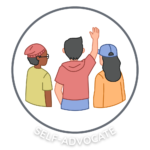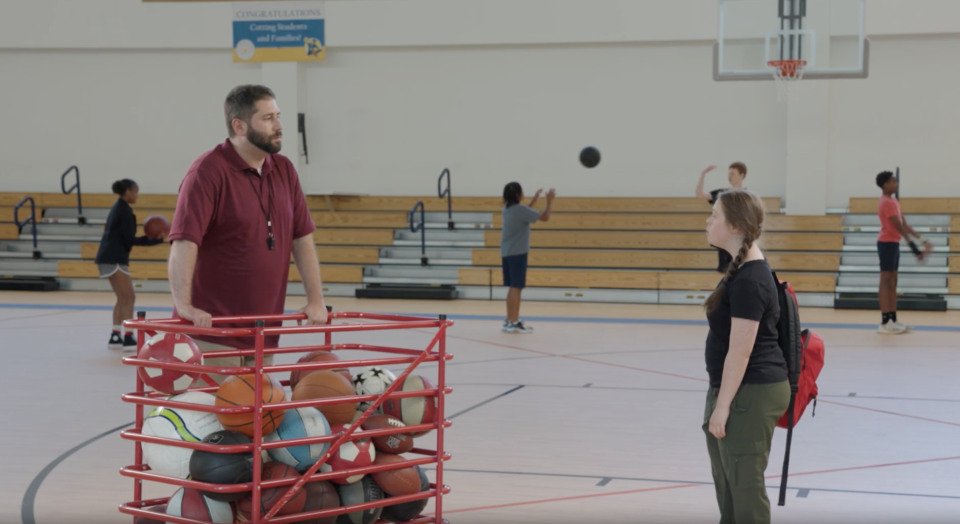
High school is a critical time for students to learn self-advocacy skills, especially for those with unique learning needs. Self-advocacy empowers students to understand their preferences, communicate effectively, and access support when needed. For high school special educators, teaching self-advocacy is essential to preparing students for post-secondary life, whether it’s higher education, employment, or independent living. Everyday Speech provides valuable resources to support this skill development, including a video specifically designed for Teaching High Schoolers Self-Advocacy Skills.
In this video, students learn how to identify their needs, communicate assertively, and seek support in real-life scenarios. With relatable characters and practical examples, the video demonstrates self-advocacy in action, helping students build confidence and take charge of their own needs. Let’s explore how you can use this Everyday Speech video to teach self-advocacy to high schoolers effectively.
What is Self-Advocacy?
Self-advocacy is the ability to understand and communicate one’s own needs, preferences, and goals. For high school students, learning to self-advocate means understanding their learning styles, recognizing situations where they need support, and expressing their needs respectfully and clearly. This skill is particularly important for students with disabilities, as it allows them to access accommodations, build independence, and thrive in different environments.
Teaching high schoolers self-advocacy skills involves guiding them to:
- Identify Their Needs: Recognizing personal preferences, challenges, and strengths.
- Communicate Effectively: Using respectful, clear language to express needs.
- Seek Support: Knowing when and how to ask for help to ensure success.
Everyday Speech’s video models these steps in a real-life setting, making self-advocacy feel approachable and achievable for students.
How Everyday Speech’s Video Teaches Self-Advocacy Skills
The Teaching High Schoolers Self-Advocacy Skills video from Everyday Speech presents a relatable scenario to help students practice self-advocacy in a practical, supportive environment. Here’s a breakdown of the video and its key teaching points.
Scenario
The video opens with Rose, a high school student who feels overwhelmed by the noise in her gym class. Rose hesitates at the entrance, visibly uncomfortable with the loud environment. Through Rose’s inner thoughts, students see her processing the situation and recognizing her need for noise-canceling headphones to feel comfortable.
Rose’s thought process reflects the first step of self-advocacy: identifying her needs. She realizes that the noise level is a barrier to her participation and that wearing headphones could make the experience easier for her.
Communicating Needs to an Authority Figure
Rose approaches her gym teacher, Coach Martin, to request permission to wear her headphones. Using respectful, direct language, she says, “Coach Martin, the noise in the gym is really overwhelming for me. Could I wear my headphones?” This moment emphasizes the importance of communicating effectively—Rose speaks up for herself with confidence, making her needs clear in a polite manner.

Coach Martin responds positively, showing appreciation for Rose’s openness and granting her request. This positive interaction reinforces that advocating for oneself can lead to supportive responses from others.
The Outcome: Feeling Comfortable and Engaged
After receiving permission, Rose feels relieved and more comfortable in the gym environment. She reflects on her successful self-advocacy, feeling proud and ready to participate in class activities. Through her inner thoughts and the coach’s supportive reaction, students see the benefits of seeking support and how it can enhance their learning experience.
The video concludes with a review of Rose’s actions, summarizing the key self-advocacy steps she followed: knowing her needs, communicating clearly, and seeking support. This reinforces the self-advocacy process and gives students a clear example of how to apply it in their own lives.
Key Lessons for Teaching High Schoolers Self-Advocacy Skills
Using Everyday Speech’s video as a teaching tool provides multiple benefits for students. Here are some key takeaways from the lesson on self-advocacy.
1. Encourages Self-Awareness
The video teaches students to be aware of their needs, preferences, and triggers. Rose’s inner thoughts show how self-awareness is the first step in advocating for oneself. Encourage your students to reflect on what helps or hinders their success and comfort.
2. Promotes Assertive Communication
Rose models how to communicate assertively without being aggressive or passive. She uses respectful language, saying, “Could I wear my headphones?” This teaches students that assertive communication is about clarity and respect, not confrontation.
3. Builds Confidence in Seeking Support
By watching Rose seek help from her teacher, students learn that asking for support is a positive, proactive choice. This can help reduce any stigma or reluctance they may feel about seeking accommodations or assistance.
4. Demonstrates Real-Life Applications of Self-Advocacy
The scenario is relatable and applicable to various situations beyond gym class. Students can apply these skills in the classroom, workplace, or social settings, making self-advocacy a lifelong asset.
Unlock more Self-Advocacy materials by signing up for your free trial today – no credit card required!
Access the full Social Communication Curriculum HERE!
Instant access to thousands of no-prep social skills activities, over 1000+ video lessons, and engaging games designed to enhance learning and development.
Everyday Speech’s Resources for Teaching Self-Advocacy
Everyday Speech offers a comprehensive curriculum to support social-emotional learning and self-advocacy. The Teaching High Schoolers Self-Advocacy Skills video is part of a larger collection of resources designed to make social skill-building accessible and engaging for students.
In addition to self-advocacy, Everyday Speech’s curriculum includes resources for communication, conflict resolution, emotional regulation, and more. These resources help special educators create a supportive classroom environment where students feel empowered to advocate for their needs.
Conclusion: Empowering Students Through Self-Advocacy
Teaching self-advocacy is one of the most valuable gifts you can give your high school students. Everyday Speech’s Teaching High Schoolers Self-Advocacy Skills video provides a relatable, effective way to introduce this skill. By using real-life scenarios, the video helps students see the importance of self-advocacy and encourages them to take charge of their needs.
Incorporate this video into your lesson plans to help students become confident, independent, and empowered. By teaching high schoolers self-advocacy skills, you’re setting them up for success in school, work, and beyond. Give your students the tools they need to thrive and make their voices heard.
Sample Video
Students learn best by watching others their same-age model the behavior! Check out a sample video modeling lesson below. We offer our entire Social-Emotional Learning platform free for 14 days here!
Related Blog Posts:
Teaching Students Self-Advocacy with Everyday Speech
Teaching Self Advocacy: Effective Lesson Plans for Building Confidence





